There are many transmitter options available for mini quads. While many would recommend a high end transmitter, beginners might choose to save a bit of cash on selecting a TX. This is completely understandable when you don’t know if the hobby is really for you, and this is where the FlySky range comes in.
This guide is written by Tom Allport (aka Tom BD Bad on IntoFPV forum) and edited by Oscar.
Disclaimer: this is NOT a sponsored post, we did not and will not get paid by Flysky for writing this guide. This article was created purely for the benefit of the FPV community, and with the hope that some people who have the passion but with a small budget can find a more affordable way to fly.
A radio transmitter is often referred to as a TX, or radio controller. Make sure to check out our tutorial to learn the basics of radio transmitter and receiver.
Why Buy Flysky TX and RX?
FlySky provides the market with some of the most affordable radio control solutions available. The range is most suitable for people who are incapable of comprehending the addictive power of flying FPV mini quad… Sorry, I mean people who just want to ‘try it out’, and don’t require all the bells and whistles of something more expensive.
This guide is to advise which of the less up-to-date products to avoid and point out a few other common areas of confusion.
In this article we will cover:
- Channels, how many do you really need?
- Technical background: Flysky TX and RX protocols
- A list of FlySky TX models
- Flysky RX options
- Essential Features: Failsafe & Telemetry
- Which TX should you get? My recommendation
Channels, how many do you really need?
There are 4-channel transmitters available from FlySky, but while a 4-channel TX is fine for simple RC cars, boats and basic planes, we really need 6 or more channels to operate a mini quad.
Channels 1 to 4 are used to control the actual movement of the craft, while the rest of the channels are assigned to the switches and pots (potentiometers) on the radio, and are referred to “Auxiliary Channels”, labelled as AUX 1, AUX 2 and so on.
Aux channels can be used to activate different flight modes, and control different peripherals on a quadcopter such as a lost model buzzer and LED light. With new technology being updated all the time the amount of functions and peripherals we can control from the transmitter are increasing every day.
Realistically you will soon begin to feel limited if you only have 6 channels available, therefore we have only included TX’s with 6 channels or more.
Flysky TX and RX Protocols
Different TX and RX might be capable of different protocols. In this section we will give you some basic understanding of the protocols used by Flysky transmitters and receivers..
There are 2 types of communication protocols you should know about:
- TX protocol – the “language” used for TX and RX to communicate
- RX protocol – the “language” used for RX and flight controller to communicate
Check out this tutorial for an overview of different TX and RX protocols.
Table of Contents
Flysky TX Protocols
There are 2 different Flysky TX protocols:
- AFHDS
- AFHDS 2A
AFHDS stands for Automatic Frequency Hopping Digital System, and is a digital protocol that ensures 2 or more radios can operate at the same time without interfering each other’s respective aircraft (or receiver).
AFHDS 2A is the 2nd generation of the system that added 2-way communication capability and allows for telemetry.
Flysky RX Protocols
In addition to the older analogue PWM and PPM protocols, newer Flysky receivers also support iBUS protocol.
Similar to SBUS, iBUS is a digital serial protocol that allows for up to 18 channels to be supported on a single wire (compared to the 16 channels offered by SBUS). These digital protocols have less latency than PPM, providing an overall better solution to traditional analogue RX signals.
Another point in favour of iBUS over SBUS is that the signal is un-inverted, so you are not required to invert the signal when using F1 and F4 boards as you do with SBUS.
Note: Micro RX often do not support PWM due to their limited physical size to provide sufficient space for the necessary solder pads.
FlySky TX models For Mini Quad
Below is our pick of the transmitters available from FlySky, those prefaced with a letter ‘i’ are the newer options, the number denotes how many PWM and PPM channels each supports.
- FS-TH9X
- FS-i6
- FS-i6S
- FS-i6X
- FS-i8
- FS-i10
NV14 – Nirvana
The Nirvana NV14 is developed together by Flysky and UndergroundFPV (UFPV). This is the latest offering in the Flysky radio lineup, featuring a gmaing pad style housing and a colour touch screen. It also supports external JR module and compatible with TBS Crossfire and Frsky R9M modules.
See my review for more detail.
Product Page: https://amzn.to/2N52yuS
FS-FT18 Paladin
The Palatin is the latest offering in the Flysky premium lineup. It has many of the new features in the Nirvana but in a much more traditional style shell. It also supports the latest AFHDS 3 air protocol.
Check out its Product Page to learn more: http://bit.ly/2N7YNVo
FS-TH9X
Buy here:
I have included the older FS-TH9X here because it’s worth mentioning that it is capable of running OpenTX.
OpenTX is open source TX firmware, which is a powerful transmitter operating system. It allows you to change menu displays, welcome screens and various other options on your TX via LUA scripts.
Sadly the TH9X only operates the older AFHDS and is not compatible with AFHDS 2A system, and therefore doesn’t support iBUS and telemetry, so it is close to becoming (if not already) obsolete.
Note : The FS-i range does not support OpenTX.
Flysky FS-i6
Buy here:
The FS-i6 is commonly found supplied with RTF (Ready To Fly) models, due to this I believe that manufacturers share the opinion that the FS-i6 is a great TX for beginners.
It has been around for a few years now and as such there are quite a few well documented hacks for this TX, from replacing the potentiometers with 6 position switches, to 3D printed grips, and more.
The FS-i6 utilizes the updated AFHDS 2A TX protocol, but is backwards compatible with the original AFHDS system too.
It has 6 native channels, but can be expanded to 10 channels by updating to a community developed firmware. This allows the full use of all 4 switches and the 2 potentiometers the FS-i6 is fitted with.
Flysky FS-i6S
Buy here:
The FS-i6S is the first update to the i6 and has a similar feature set to the original, but be aware that the i6S is not backwards compatible with AFHDS, so it will only work with AFHDS 2A compatible RX. This is important as many micro ARF brushed models only support the original AFHDS system.
The appearance of the FS-i6S is pretty er, pretty! Almost what you might expect a TX to look like if Steve Jobs had a hand in its design! The VrA and VrB potentiometers have been moved to a more accessible position on the corners, and with only the edge of the dial exposed, it really helps to maintain the image of sleek minimalism.
The trainer port has been moved to a more convenient location on the bottom of the TX, and next to it you will find the addition of a micro USB, for simulators and firmware updates, which was a good move in my opinion.
I do think that the designers may have pushed appearance ahead of function in some areas, as they have neglected to include trim buttons. Ideally you should trim your craft using the ‘sub-trim’ option in the TX menu, this then saves the trim setting to the model memory data. However I find that it is easier to use the trim buttons to stabilize the craft 1st, then remove trim added via the buttons in conjunction with adjusting the sub-trim through the menu.
The i6S provides up to 10 channels when using an iBUS / SBUS RX. Despite the benefits and its futuristic looks, I am not completely happy about this one, only because of its lack of trim buttons, and the fact that it isn’t backwards compatible is a bit, well, backwards!
Flysky FS-i6X
Buy here:
The FS-i6X is the latest update to the i6 and retains the basic design of the original. Unlike the i6S, the X is backward compatible and supports both AFHDS and AFHDS 2A.
With a simple firmware update using the provided cable, this iteration supports up to 10 channels without the need to hack anything. The model memory has been increased over the i6 too, now storing 20 models.
The layout of the X could have done with a touch from the design team of the S but as they have stuck with the original form factor of the i6, this means that there are some design flaws that have re-emerged. The inclusion of the USB port on the S was great, but it has been frustratingly excluded here, this means that you will need to purchase a dedicated simulator adapter to use with your PC simulators.
The trainer port on both the original i6 and the i6X act as the firmware update port, trainer port, and simulator cable port, which is in the centre of the back of the TX. If you are flying with a sim, every time you put the TX down it puts stress the sim cable and trainer port, and accidentally stepping on it in this scenario could spell the end of the radio! Reconnecting the cable to the circular PS2/Video S socket is not quite as simple as ‘just plugging it in’ either.
Note : The firmware update cable provided with the FS-i6 and FS-i6X will only work to update the firmware and is not capable of supporting ‘trainer’ connections, neither can it be used to control a PC simulator. These cables must be purchased separately.
Flysky FS-i8
Buy here:
The FS-i8 is the newest TX on the list from FlySky, and as the name suggests it offers 8 native channels, serving to fill the gap between the i6 range and the i10.
The i8 sees the reintroduction of the micro USB port which is used to recharge the supplied LiPo battery (the i6 series are all powered by 4 x AA batteries). The USB also acts as the trainer and simulator port. Negatively, the antenna of the i8 is the adjustable motive type, which gives me concern over its durability.
Borrowing heavily from the design of the i10, the FS-i8 isn’t the best looking TX available, (some will say that’s a gross understatement) but that can be put, in-part, down to the large TFT colour touch-screen.
I think the size of the screen may be useful if you don’t have great eyesight, but TFT screens of this size can be even more difficult to make out in bright sunlight than a backlit black and white LCD. I also think the touchscreen is more gimmick than actual functionality at this stage, though I’m sure we can expect to see more touch-screens providing a real improvement to user friendliness in future.
Flysky FS-i10
Buy here:
The FS-i10 is the top of the range offering from FlySky and provides 10 native channels with all the (5) knobs and (7) switches to make full use of them all. Like the i8, the i10 also utilizes a rechargeable LiPo battery and a USB port for charging, connectivity for sims and trainer functions.
The appearance of the i10 is a bit more classy than the red plastic of the i8, but again its face is marred by the massive touch-screen! The i10 and i8 both weigh in at 720g, almost double the weight of the i6S at 410g.
Thanks to Loopyroberts for his comment below confirming that the i10 does support the original AFHDS system, so you will be able to bind with older FlySky RX.
One point that has me worried about the i10 (and the i8 as well) is that there is no mention of how long the supplied rechargeable battery lasts. While using a LiPo to power the TX is a good idea (IMO), I think that the large screen might burn through the battery quite quickly.
Turnigy Evolution
Where to buy:
The Turnigy Evo is not a Flysky TX, but we’d like to include it in this list because it uses the same TX protocol as Flysky TX’s, and it’s compatible with Flysky’s RX as well.
It’s a budget TX that is light weight and small. It has the shape of a gaming controller and that’s great for people who prefer to control the sticks with their thumbs, but for “pinchers” (using both thumb and index finger) you might find it a little uncomfortable.
You can use the Turnigy Evo to play simulators, and it supports PPM, SBUS and iBUS receivers which is great for mini quad.
Flysky RX Options
Receivers are where FlySky would most benefit from adding a few more solutions to their range, they are lagging behind the market leaders when it comes to full featured micro RX options.
So much in this hobby is a balancing act, “motor KV” vs. “prop size”, “battery weight” vs. “flight time”, and FlySky receivers are no different. You will be required to do a bit of ‘balancing’ to ensure that you get the features you are expecting from your RX…
The older models in the FlySky RX range are prefaced with the letters ‘iA‘ and are relatively large and heavy, weighing between 15 and 20 grams! As keeping weight down is critical in a mini quad, I have excluded the bulky options to focus on these lighter weight solutions.
Also all the following RX use AFHDS 2A and thus are incompatible with the FS-TH9X.
Flysky FS-A8S V2
Buy here:
The FS-A8S was one of the 1st micro RX available for FlySky, it weighs just 1.2 grams, and is commonly supplied with FlySky TX’s as a bundle.
There has been some talk of problems with the A8S retaining the protocol selection, automatically reverting from iBUS to the default 8 channel PPM on power up, which would cause failsafe to fail.
The version 2 of the A8S has been released, which has fixed this problem, but there is still talk of “full throttle brownouts” where RX channels might behave randomly when throttle hits 100% (I will test this and update this info soon).
While the weight of this RX aims towards micro <100mm models, the length of the supplied IPEX antenna is a bit long to be ideal for this application.
- Protocols : PPM, iBUS
- Range : 300+ meters
- Failsafe : yes on iBUS, no on PPM
- Telemetry : no
- Model size : any
- Weight : 1.2g
Flysky FS-RX2A
Buy here:
The FS-RX2A, can be considered an updated A8S and is one of the smallest RX made by FlySky at the moment. It weighs in at 1g, and measures only 12mm x 15mm to gift the market with a true micro FlySky RX. The
RX2A specs claim the longest range on this list, but considering the simplicity of the monopole antenna, fly out this distance at your peril!
- Protocols : PPM, iBUS
- Range : 400+ meters
- Failsafe : yes on iBUS, not on PPM
- Telemetry : no
- Model size : <130mm
- Weight : 1.0g
Note : The failsafe on the RX2A only works over iBUS protocol and not PPM.
Flysky FS-RX2A Pro V1
Buy here:
The upgraded version of the RX2A with longer range. It features better antennas with IPEX connectors so you can easily replace them. Failsafe is available with iBus.
- Protocols : PPM, iBUS
- Range : 500+ meters
- Failsafe : yes on iBUS, not on PPM
- Telemetry : no
- Model size : <130mm
- Weight : 0.9g
FS82 MICRO
Buy here:
Another compact and light weight receiver option and with AFHDS2 protocol support. No telemetry, but supports both PPM and iBUS protocols. Compatible with popular radios such as the Turnigy Evolution, FlySky i6S. It also supports failsafe in iBUS.
- Protocols : PPM, iBUS
- Range : 300+ meters
- Failsafe : yes on iBUS, not on PPM
- Telemetry : no
- Model size : <130mm
- Weight : 1.2g
Fli14+ Mini
Buy here:
A light weight RX that is able to output RSSI on the 14th channel and it supports AFHDS-2A protocol.
- Protocols : iBUS
- Range : 500+ meters
- Failsafe : no
- Telemetry : Yes, RSSI and vBAT via Channel 14
- Model size : <130mm
- Weight : 1.7g
Flit10
Buy here:
Similar to the Fli14+ but with diversity antennas giving you more reliable signal.
- Protocols : iBUS
- Range : 500+ meters
- Failsafe : no
- Telemetry : Yes, RSSI and vBAT via Channel 14
- Model size : <130mm
- Weight : 3.1g
Flysky X6B
Buy here:
The FS-X6B is the only RX on this list with diversity (2 antennas), it also has the added benefit that the board, which measures 36x22mm has 30.5mm mounting holes so it can be added to the FC stack.
This is a 2-way RX which is capable of providing telemetry from the sensors on the FC to the display on the TX. The FS-X6B receiver provides failsafe capability over both iBUS and PWM.
Weighing in at 4.5g this is the heavyweight on the list, and with diversity to ensure signal reliability, this is ideal for models in the 180mm+ category.
- Protocols : PWM, PPM, iBUS
- Range : 300+ meters
- Failsafe : yes on PWM and iBUS
- Telemetry : yes
- For model size : >180mm
- Weight : 4.5g
Eachine Minicube FlySky RX
Buy here:
The Eachine Minicube Flysky RX is a great option for outdoor models between 100mm and 180mm due to its 20x20mm mounting pattern, and pre-installed buzzer.
However there is no antenna diversity and no telemetry. The Minicube RX weighs 3.1g including the buzzer, but it is the most expensive RX here at just over $15.
- Protocols : PPM, iBUS
- Range : 300+ meters
- Failsafe : yes
- Telemetry : no
- Model Size : >120
- Weight : 3.1g
Turnigy iA6C
Where to buy:
The Turnigy iA6C is an AFHDS2A radio receiver with dual antennas. It’s light weight and supports all both serial RX protocols making it a great option for mini quad.
- Protocols : PPM, iBUS, SBUS
- Range : 300+ meters
- Failsafe : yes
- Telemetry : yes
- Model Size : >140
- Weight : 7.9g
MOY RXA2-10
This receiver has autobind function – it always tries to bind automatically every time it is powered on.
- Protocols : PPM (10CH), SBUS (10CH)
- Range : 100+ meters
- Failsafe : yes
- Telemetry : no
- Weight : 2g
- Dimension: 12x18mm
- Compatible Transmitter: FS-i4, FS-i6, FS-i6S, FS-i6X, FS-i10
Product Page: https://amzn.to/2XbJ4cO
Flysky FS2A 4CH PWM Receiver
This is a variant of the FS-RX2A, but with four PWM channel output and no PPM/SBUS support. It has a 3-pin servo connectors, ideal for micro planes and wings. It’s compatible with AFHDS 2A protocol.
- Protocols : PWM 4CH
- Range : 400+ meters
- Failsafe : Yes
- Telemetry : no
- Weight : 0.9g
- Dimension: 11x25mm
- Support: FS-I6, FS-I6X, FS-I6S, FS-TM8, FS-TM10, FS-I10 and other AFHDS 2A protocol transmitter
Product Page: http://bit.ly/2Eb0YF1
Flysky FS-IA8S
This receiver was designed together with UndergroundFPV for Flysky Nirvana NV-14. It has diversity antennas and works in AFHDS 2A protocol. Outputs PPM / i-Bus / S-Bus signals.
- Protocols : SBUS PPM iBUS
- Range : TBC
- Failsafe : TBC
- Telemetry : TBC
- Weight : TBC
- Dimension: TBC
- Supports AFHDS 2A protocol transmitter
Product Page: http://bit.ly/2tuSgeN
Flysky IA8X
The smallest original receiver made by Flysky currently.
- Protocols : PWM and iBUS
- Range : 200+ meters
- Failsafe : TBC
- Telemetry : Yes
- Weight : 2g
- Dimension: 15x13x3mm
- Support: AFHDS 2A protocol transmitter
Product Page: https://amzn.to/2IcLG6H
X-BOSS RX2A PRO
- Protocols : SBUS
- Range : 500+ meters
- Failsafe : TBC
- Telemetry : no
- Weight : 0.9g
- Dimension: 12x10mm
Product Page: http://bit.ly/2X5lVsz
Flysky X8B
- Protocols : PPM, iBUS 8CH
- Range : 300+ meters
- Failsafe : TBC
- Telemetry : TBC
- Weight : 3.7g
- Dimension: 32×22.5×7.5mm
Product Page: https://amzn.to/2I9K8dt
Essential Features of Flysky Receivers
Telemetry
I think that for FlySky, telemetry has been a bit of an afterthought, and when most newer FCs come with an integrated OSD, who can blame them if they are focussing sales towards the FPV market? In reality though telemetry can be considered one of the ‘bells and whistles’ I referenced earlier, and for the beginner is not a necessity by any means.
Failsafe
As you can see, when using a FlySky RX there can be some sacrifices that must be made to ensure you have an operational failsafe. Failsafe is probably not as critical to an indoor model or a micro that you use in the garden, but it is far more important than telemetry. For some reason the most suitable RX FlySky make for larger models (the FS-X6B) only provides a failsafe on the older PWM protocol, which is nonsensical in my view.
As you can see, failsafe is sometimes only available over specific protocols, depending in the RX. Failsafe is far more important than telemetry because it minimizes the chance of unexpected behavior in case of losing RX signal. Take the time to ensure that you are using a protocol that supports failsafe!
So, which Flysky TX should you buy?
tl;dr… Our first choice is the Flysky i6X
The selection of RX that I have detailed above are the cream of what Flysky currently have to offer for mini quad and micro quads, but there are pro’s and con’s to each.
On the other hand, I honestly have to say that out of all the Flysky TX we’ve seen so far, the Flysky i6X is the one I would choose for flying a mini quad. The FS-i6X is inexpensive, provides 10 channels, and can operate on both AFHDS and AFHDS-2A systems. It’s compatible with iBUS/SBUS receivers as well as the older PWM and PPM receivers.
Its light yet durable, simple to use, and offers all the required features (such as elevon mixing and V-tail settings) to set up and fly almost any model aircraft. The FS-i6X may not be perfect but it ticks a lot of boxes for the price, and it will serve a newcomer well for a long time before you even consider upgrading.
My next pick would be the Turnigy Evolution, and the Flysky i6S is also a pretty good choice if you don’t mind the missing physical trim buttons and lack of support for older AFHDS receivers.
What’s wrong with other Flysky radios?
The i8 and i10 offer more native channels and are well provisioned with switches, however despite the attempt to integrate the updated technology of a touchscreen, I feel that these 2 fail to provide much actual improvement over the i6X.
It makes sense for FlySky to include these options in their range, however they are catering for the affordable end of the market. Since the introduction of the FrSky Taranis QX7 at a similar price point to the FS-i8, there is now some stiff competition at the $100 market level.
Other options for those that are unsure about committing to a single RC system are starting to hit the market now. There are multi-protocol TX and external modules to support a bind with FlySky, FrSky, Futaba and Devo RX as well as many toy grade quadcopters out there.
The Jumper T8SG which has Deviation Firmware installed, and the iRangeX iRX-IR8M, at between $70 and $80, are also worth checking out.
Is there a better TX than the Flysky i6X?
The i6X is only $50 which is a pretty good price for what it does, but in reality if I had the extra $50 to spend, I would probably get a FrSky Taranis QX7 ($100).
A few reasons:
- Firstly, there is a wider range of small size RX for FrSky. Although they are generally slightly more expensive, but the full featured options and additional range they provide are worth the extra investment
- Secondly, the OpenTX software on the Taranis is extremely powerful and flexible
- And there is no RSSI (a feedback on how good your radio link is)
- Lastly, the Taranis provides excellent range for mini quad (1Km+)
I wish Flysky would support OpenTX with their radios, as it allows for more freedom of customization and settings. Another super useful feature that is missing is the LUA script that has been popular with the Frsky Taranis, which allows the pilot to conveniently change PID, rates even VTX settings from the radio.
Author: Tom Allport (IntoFPV ID: Tom BD Bad)
Edit History
- Nov 2017 – Article published
- Feb 2019 – Added 2 new radios, and 5 new receivers
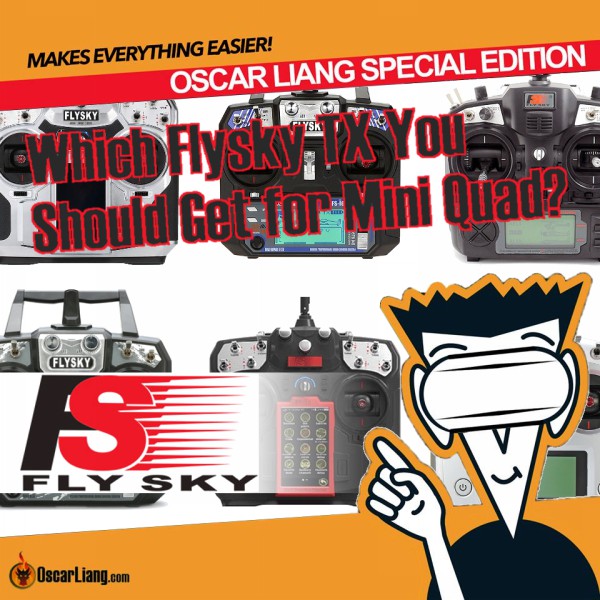

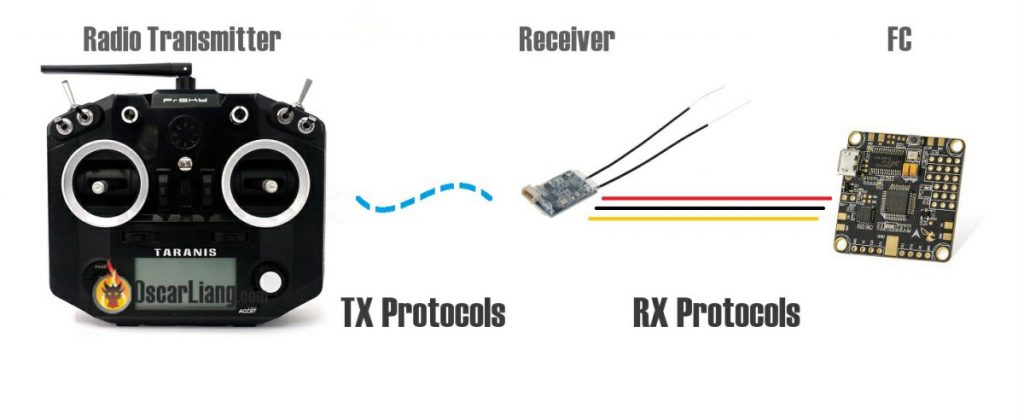


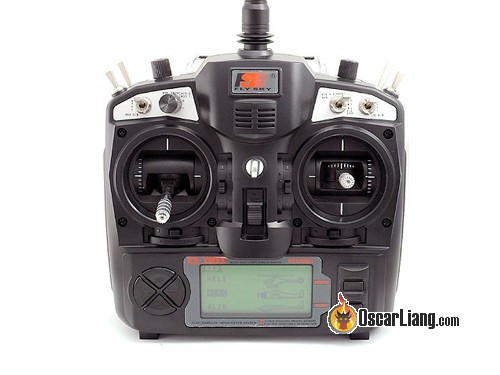
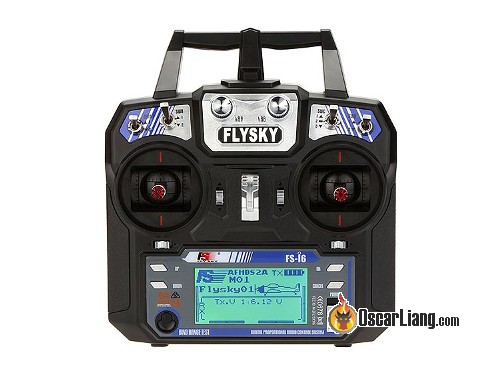
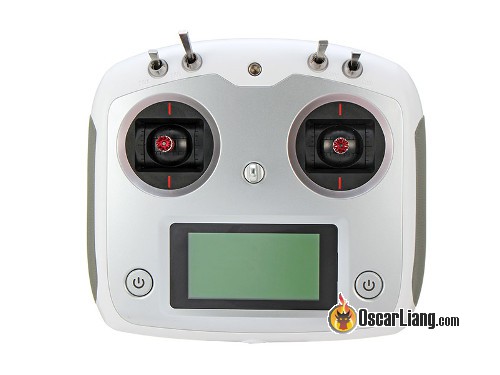
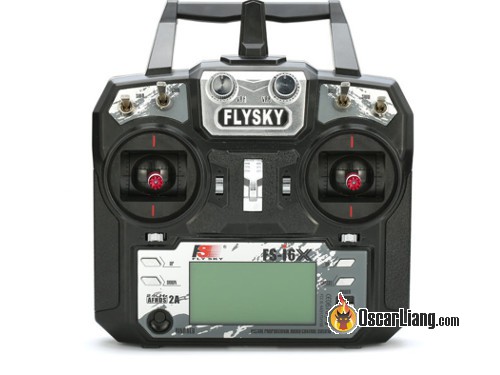
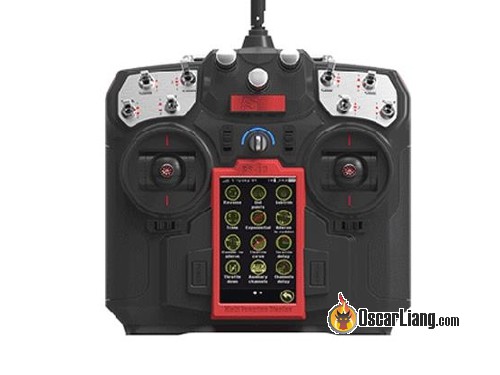
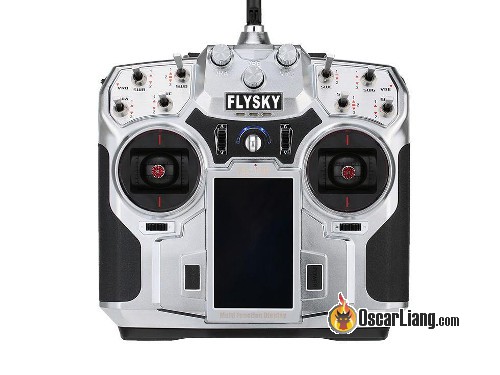


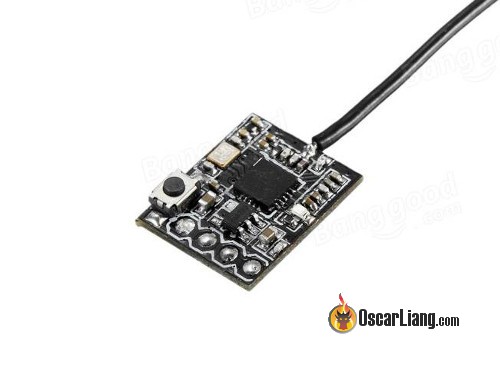

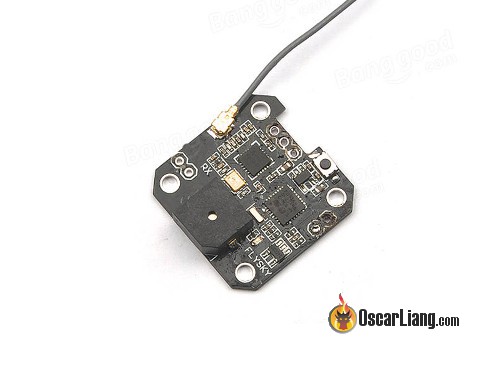
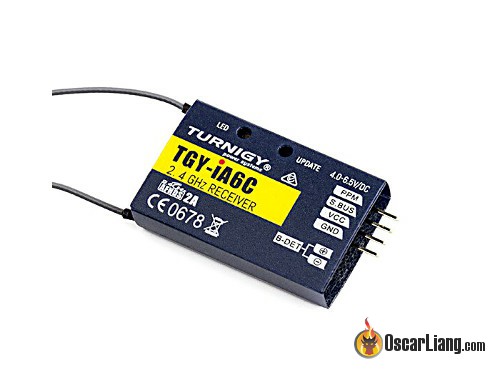
46 comments
First of all your amazon link for Nirvana NV14 is broken. Second, to be fair, it’s not like FS-i range does not support OpenTX, but no one has bothered to develop OpenTX for FS-i range. But hey, lents not get bothered by facts, right?
Hi Oscar, have you tested the FS-A8S V2 for the “brownouts” at 100% throttle?
What about the receiver XR602T-A for this controller?
Hello, I am patiently waiting for the Flysky Nirvana fpv designed beauty to… settle all it’s little quirks, as I am really getting into fpv now, big time, and as I am looking to invest for an fpv dedicated tx, I have a question though regarding a transmitter I am not to sure a lot of people are very familiar with, simply because of the cost, but basically, would it even be worth looking into other transmitters if you have a Jeti Duplex DS14 + receivers, let’s say happening to be laying around? Everybody keeps telling me that apparently, if you are looking into a serious tx, that is the higher of the high end products, what is your opinion? I have had a look online, but how do they handle with quads and multi-copters? Anyone had a go?
Keep up the in depth reviews.
Hi Oscar! Thanks for this incredibly useful post. If you had to recommend one today that has failsafe, diversity, telemetry, rssi, which one you should recommend? (215mm frame, space or weight not really a problem)
Thanks
Hi, I know this is an older article, but for those doing research for a fix, I’ve had problem, mentioned in the article, with the motors going 100% full throttle as soon as I armed, with two different quads, I was really stumped for a couple days on the build. This fix I found on a Github forum, apparently there were quite a few people having it.
Several people mentioned they fixed it by simply turning off telemetry, not sure why that worked, but for some it did. The other fix is the below CLI code, just copy and paste. If your new to the hobby, Oscar and JB have many articles/tutorials how to use CLI, and make sure you save current configuration to a file before doing this, in case u want to switch back. Also make sure you set all your filters and PIDs back to default, if you don’t know what that it is, they’re most likely still at default. I applied this fix to a Sailfly X mod, using the Crazybee F4pro v3.0 with intigrated flysky rx, and the other was an older toothpick I got from frustrated hobbyist years ago because he couldn’t fix it. Sat in a drone parts box until a couple weeks ago I decided to try and revive it. It has a F3 Piko Blx board on it, which I upgraded to BF 4.0.6, and added the Fli14+ rx, besides changing esc’s from oneshot to Dshot600 new lollipop antenna and some new props, this fix was the only other thing I had to do. Not only does it fix problem, both quads feel great flying. I’m just learning to tune, but IMO it’s great. Oh yeah, guy that posted this code said he’d never tested it on anything earlier than BF 4.0, I’ll put link to Github page below the CLI code, it was issue #7878 if the link doesn’t work for some reason.
set d_roll = 25
set d_pitch = 27
set d_min_roll = 0
set d_min_pitch = 0
# set gyro1 lowpass to 100-300 dynamic using PT1
set gyro_lowpass_type = PT1
set gyro_lowpass_hz = 100
set dyn_lpf_gyro_min_hz = 100
set dyn_lpf_gyro_max_hz = 300
# disable gyro2 lowpass
set gyro_lowpass2_hz = 0
# set dterm1 lowpass to 100-150 dynamic using PT1
set dterm_lowpass_type = PT1
set dterm_lowpass_hz = 100
set dyn_lpf_dterm_min_hz = 100
set dyn_lpf_dterm_max_hz = 150
# set dterm2 lowpass to 100hz with PT1
set dterm_lowpass2_type = PT1
set dterm_lowpass2_hz = 100
#save
github.com/betaflight/betaflight/issues/7878
Hello, are any of these TX’s suitable/compatible for the Syma F3 Rc helicopter (4.ch), thanks, Dan
can you show me how to connect the fly sky receiver and nv-14 radio up tp pixhawk 4 or oixhawk 2 the cube
I flew the Syma F3 with the V911 TX tonight and although it flies just as long a flight as the factory F3 TX,..the V911 TX does not pull the servos as far travel as the stock TX allows it to…just a little less travel. So is there a different suitable TX for the Syma f3 besides the V911’s?.. Dan
I bought the Irangex 4 in 1 multimodule for my Taranis to bind with my Flysky drone. I was unable to get it to work until I noticed there’s a protocol called “FS 2A” – this one worked. There’s a protocol called “Flysky” – don’t use that one.
Just an FYI if anybody’s in the same boat I was in.
Hi Oscar
I’m unable to bind my X6B rx to my new jumper T16
I work well with crossfire but with the multiprotocol module from Jumper, and the good model configurated.
I found lot of protocols for Flysky : CX20, V912, V6x6, V9x9 but i don’t which is the good one.
if you have an idea to solve my problem I will be very grateful.
Best regards
I have several Flysky FS-i10 radios and I love them. I fly airplanes as well as drones. I have been building model airplanes for 68 years and 48 years ago saw the revolution thaat drones would create. I was in aerial reconaisance at the time. So OK enough background, here is what I would like to know. A lot of the packages drones fly wqell but the transmitters are cheesy little hard to use pieces of junk. I would love to be able to bind them to a decent transmitter and really improvew the flyability. Can this be done and how?
Hello,
New to drones etc etc and been directed here to try download a free sim for macbook :)
Which is best for me as a noob ?
Which is best for mac os ?
Whilst being free to start me out !
Many thanks
We are retired engineers, interested in making octacopter to help farmers. Presently, in order to learn the technology, we are assembling a quadcopter. The BLDC motors are A2212, 1000kv. We are using Flysky i6 radio for a quadcopter. After binding the receiver, we tried individual motors, which worked fine. We are using AFHDS 2A protocol. However, we are unable to run the motors in mode2.
Could you please suggest?
We are from India.
Range : TBC
Failsafe : TBC
Telemetry : TBC
Weight : TBC
Dimension: TBC
can you explain what the acronym TBC is.
Thnx
To be confirmed
I am mechatronic student. And I have intrest in robotics means my branch is robotics branch ,And I have learn in robotics and gain more knowledge about robotics and drone is my favourite subject ,so I have hope you ,your help me more knowledge give for a drone.
Can someone please help me out? My first question is… if I buy the ia6b which supports ibus, but my fc only has sbus, ground, and 5v receiver tabs available for the receiver, will that work. Note: I am using an fs i6. Also, if the fc and receiver are compatible, what cord would I need to buy to have the ibus receiver working with the sbus port. (I am a noob) please help….thank you so much and it was a very informational article :)
iBUS works with hardware UART. If the SBUS pin has inverter built-in then it won’t work.
Getting obsolete fast. Nirvana has Opentx, receivers have been updated to 8 and there are some clone receivers on the market too. Despite being the budged option forever, the Nirvana has really upped Flyskys game a lot. I was looking for a new radio, Nirvana happened at the perfect time for me. I know the firmware isn’t complete yet but I can fly quads just fine with it. And despite being a pincher, I can hold the radio without the balancing bar just fine. Guess it’s time for an update?
Yea that’s a good call :) I just need to find the time to.
While we speak I am still using the Nirvana and their firmware update is pushing out constantly so I want to hold on until it’s a bit more stable.
Great reading!
OI just bought my first Flysky (Turnigy Evolution) to use with Velocidrone sim and I must say that it’s a great radio for the money. Feels much more expensive than the 30€ that I paid for it.
I have a Mobula 7 DSMX to my Spektrum DX9 and I thought that the Eachine E010S Flysky would be great with the Turnigy Evolution, but I cannot get them to bind…
If I could get them to bind, I will most likely buy a Mobula 7 Flysky as well.
Any thoughts, is the E010S Flysky not compatible due to differeft Flysky protocol?
If so, is there some update I can do to get them to work together?
Thanking you in anticipation!
Best regards
Janne
You mention the FS i6s, but no mention of the. Turnigy version. Also I believe that this is an old article, so FYI, the TGY i6s will accept the FS i6s Firmware upgrade of V2.0.0.58. This brings a lot more functionality to the txover the original Firmware. An iA6b and an iA6C receivers are bundled, so you have a choice of PWM or PPM/IBUS/SBUS on one rx and PPM/IBUS/SBUS on the other. Both provide telemetry and diversity and I agree the i6s is a really neat and well designed tx. There is a “fix” to allow Trim setting, but it is a fiddly task. The functions and setting update in real time, no need to “save” and changes and a one touch rest for each menu display as well as the “factory reset”. The big plus is the Fly Mode, you can set any two of the controls to Fly Modes. Eg, you can set the output of each position of a 3 way switch to specific values between 1mS and 2mS (1000micro volts and 2000micro volts) ideal for Angle/horizon and Manual selections. Partnering both 3 way switches give the option to set up to 9 options! Each upgrade of the Firmware has improved the tx.
Hi
I have a Flysky FS -T4B which is 4 channell and cant Bind to a 6 channell FS R6B and will not Bind ?
Is it not possible to bind these 2 together.
many Thanks
Murray
Have the FS-i6 with 10-channel firmware. Works perfect, and you can get 2-way telemetry. Range is 2km+ with iA6B / X6B. I lose 600mW video before I lose control signal. Cheap solid option. Use it on planes and quads.
Just bought the Turnigy Evolution, on blowout sale at half price (€31). Will switch my quads to this, and free up space on my FS-i6 for planes.
There is a GitHub project out there witch hacked firmware for iA6B / iA6C / X6B that will inject true reciver RSSI on iBus channel 14. So these receivers can be upgraded (Requires ST-Link V2 interface)
The FlySky stuff is fantastic value for the money. Thinking about FrSky but has not made the step yet. HW expensive, rx expensive. Likely not better…. And OpenTX is expected this winter for the Evolution. And NV14 Nirvana is just about to be released.
Hello
I have few question
I have FlySky TH9X (Module RM-002) and R9B receiver work ok,but i have “older” receiver too R8B is that work ok that radio/module?
What different R8B and R9B?
Hello, nice info. Can you tell.me wich battery Volt should I use on the Flysky X6B ? Thanks a 3.7v lipo its fine?
I know this article is very old at this point, but you can set up a FlySky TX to receive RSSI with iBus (X6B RX).
My first computerised TX was a Turnigy TGY-i10 (It’s a rebrand of the FlySky FS-i10). It was OK (Ish) But it’s been hobbled by buggy Turnigy reworked versions of the firmware. Every new revision of the firmware removed a couple of the bugs, But added a handful more. It’s a real shame because in my opinion the switch and slider layout is better than the Flysky original. In the end I “Upgraded” to a perfectly stable i6 that just worked. The i6 has quite a community following and I soon installed one of the 10 channel firmwares to it. I also added a single cell Li-Po, A USB charging board, And replaced one of the pots with a 6 position rotary switch. That turned it into something so much more usable than my original TGY-i10.
Later I got an i6X because I found out that the new main board allows you to replace any and all of the 2 pole switches with 3 pole versions. I replaced 2 of them so all but my Arm switch had 3 pole jobs and then added a 6 position rotary switch to this one too. This kept me happy for a while, But I kept hankering for something with higher resolution gimbals. So I almost went full circle and bought a FS-i10. This is a great TX, with pretty much every setting you could ever want. Contrary to what some people have said, The battery life isn’t any worse than most of the other comparable TX’s out there, And I often get a full days flying out of one charge. If it did get low I could even connect it to a power bank and keep flying while the TX’s battery charged. I have a spare battery and USB charger that goes out with me just in case though. The colour screen does up the power usage a fair bit, But as long as you don’t set the backlight to stay on at full brightness all the time it’s not a problem. The AFHDS 2A protocol is pretty good when it comes to power use anyway. I’ve read that it does something along the lines of telling the recever to keep its current channel position values until told to change them rather than constantly updating it with the same values. This mean that if the channel data hasn’t changed the TX doesn’t transmit any more channel position data until there’s something different to tell the RX about. Each missed packet doesn’t save a huge amount of power, But as the channel position data is being updated hundreds of times a second, and while flying in a straight line you might only need 10% of the normal data load transmitted, The power savings from the missed data packets start to add up.
I mainly use X6B RX’s on my brushless quads as I find them a pretty convenient way to add an RX to a FC/PDB stack and they have the flight pack voltage monitoring gubbins built in. I’m a bit bemused by everyone saying they only have around a 300m range though. I’ve been out to over 500m and still had quite a respectable RSSI value. Granted, I tend to make sure my aerial wires are high enough not to be shielded from the TX by any part of the frame in normal flight, And I orientate them in the correct 90′ “V” for anything that I may fly a considerable distance, But it seems strange for a manufacturer to be airing on the side of caution by underquoting their products abilities by over 40%.
All in all I’m happy with my choice to stay FlySky kit. I’ve used a borrowed FRsky Taranis X9D for a few flights and I can’t understand why they’re seen as vastly superior to the FS-i10. They have a slightly odd layout to the menus (Though no worse than the i6 with things like it’s “Hold cancel to select” weirdness), And felt no better made to me than the FlySky offering, The X9D’s range was pretty impressive, But with the right RX (Mainly the IA10B or IA6B) I can get out to over a kilometer with all my FS transmitters without any issues, And that’s plenty far enough for what I’m flying.
I’m a 2 week old newcomer to the hobby and I must say all I’ve seen are people who are welcoming and helpful. Thank you for this site which is an absolute goldmine of information that one might have to go to a few different places to get all of.
I really get the addictive part as for a guy in general it ‘ticks a lot of boxes’ i.e electronics, theory, flying, gadgets, collecting, building, hanging out with others who share a common interest, etc.
I was flying my Bugs 3 and Wizard x220 (told you I’m new) today in a local public soccer field and a man and his wife were walking their dog so I stopped flying as they passed. On the way back his dog ran over all happy to see someone else and he came over. A completely great encounter with a general member of the public. He had some questions and was generally interested in the hobby so I gave him a bit of info on where to look and off he went. I’m so glad I decided to watch a couple of youtube videos.
Now I just want to find a local FPV club around the Toronto area should one exist. I’m 2 weeks in and can fly FreeriderFPV in acro without crashing as long as I don’t get too cocky, and from watching myself with the Wizard today just LOS, I find that control isn’t the problem – just orientation. I can hover nicely and put it where I want it but with LED’s on the bottom of the motors sometimes it’s a bit difficult to know your orientation unless it’s above your head. It’s a stark contrast from the Bugs 3 which almost flies itself and has a very bright LED on it’s nose. Time to an LED mod to the Wiz.
Thanks again for the resource!
Sorry…my comment had nothing to do with transmitters but now I want something with more channels to have a location beep etc.
Mark, check out new generation hobbies in vaughan! The guy who owns the shop knows everything there is about where to fly. Over the weekend he was actually at a racing event in niagara! He also has info regarding the local and legal rc flying locations. Hope this helps!
This is, first and foremost, a ‘FlySky’ buyers guide, but they do look like they are worth mentioning, if only because the Evolution looks like an xbox controller and a gameboy had a baby! Also the price point of this TX pretty interesting, bisecting the $50 & $100 options. The TGY iA6c is actually much smaller and lighter than anything in the FlySky iAxx RX range, but it still offers telemetry and diversity, at the advertised 7.5g it is still almost double the weight of the X6B and also doesn’t offer the 30.5mm mounting solution.
Thank you for the great article! I have ordered my FSi6X with X6B from Bang good! This is my first purchase from Bang good and I am thrilled at the price/value of this radio system.
I have the Turnigy version of the i10 which is pretty much identical. I can confirm that it supports the original AFHDS but the battery does drain very quickly.
Should mention that the FS-A8S receiver’s brownout issue can be fixed by wrapping the RX in aluminum foil to isolate it from interference. Just heatshrink or electrical tape it up, wrap the foil around it, then heatshrink or tape again, and boom, reliable functionality. If something like this is not done, I would never, ever recommend someone use the A8S.
Would also recommend adding the Turnigy Evolution to the list – with new hobbyists joining constantly, the Evolution will likely be a much more familiar form factor and is more than capable as a TX :)
Thanks for this tip, I will give it a go…
Failsafe with Ibus and the FS-X6B receiver works fine, you just have to set it up via the remote first.
Yeah.. what a shame of false Information here. Failsafe works perfectly fine on iBus when you set it up in the Transmitter.
Hi JayQ and Christoph, Tom here (article writer). Thanks for confirmation that the X6B receiver DOES have failsafe over iBUS. Apologies for this misinformation, which was taken from from the product page at BangGood (as well as other supplier sites with the same mistake). I was so put off by the idea of failsafe only over PWM, that I ordered the Eachine minicube RX instead, but I will be ordering the X6B right now!!!
Again, sorry for my mistake, and thanks for taking the time to correct it!
I will update the article today…
Why no mention of the Turnigy Evolution or IA6c Rx?
A sponsored post is a sponsored post. And I don’t mind! Seriously.
Well written, will be helpful to fresh and future pilots and it took time to do the research so why not, but it should be stated somewhere.
Hi Mat, this is not a sponsored post.
I actually had to pay the guest writer for writing this guide out of my own pocket.
Ah I’m really sorry for this, but it really looked like one focusing so much on just one manufacturer.
Again apologies.
well, like the title suggests, it’s a buyer’s guide for a Flysky TX :)
It’s an economic brand and people with a small budget might benefit from it.